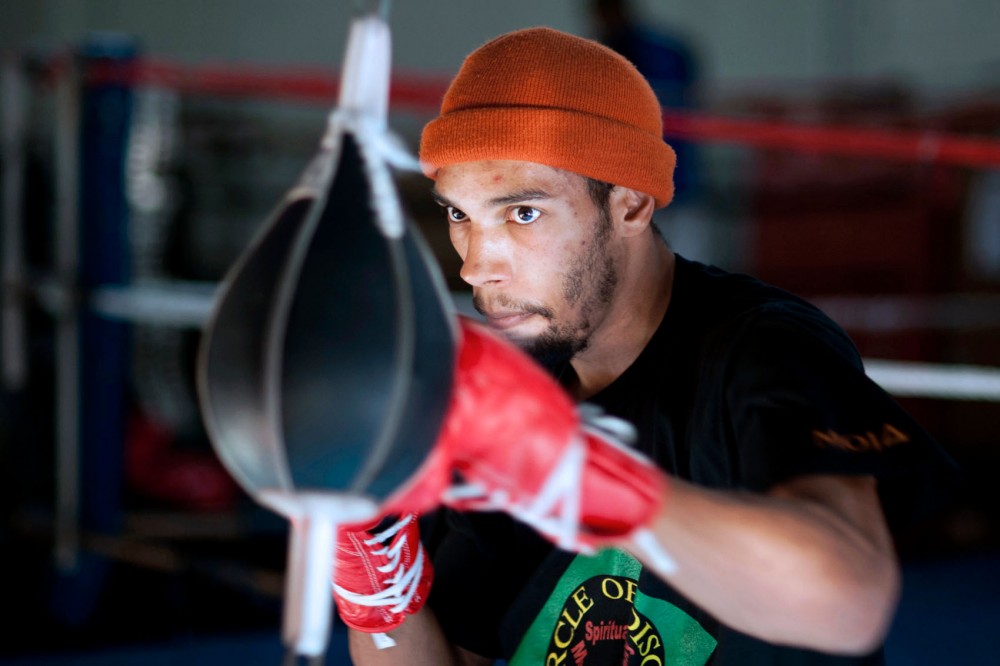Chris Chen grew up boxing in Taiwan.
Now, as a kinesiology graduate student at the University of Minnesota, Chen is looking to give back to the sport by conducting boxing research.
Earlier this month, Chen and other kinesiology researchers released a study that found boxers who displayed pre-bout body sway were more susceptible to post-bout motion sickness.
University kinesiology professor Thomas Stoffregen, one of the researchers, said the results might eventually help in measuring and predicting concussion risks for athletes.
Stoffregen said there might be a connection because motion sickness boxers experience is often an acute symptom of concussion — “not just in boxing but for any kind of concussion.”
Chen said the ultimate goal of the boxing research will be to identify boxers who have a predisposition for injury before they enter the ring.
“If we can find that, we can save some young boxers before they seriously get hurt,” Chen said.
Sankara Frazier, the executive director and founder of the Circle of Discipline youth and young adult boxing organization, said he thinks the research “could help to minimize the damage.”
Although boxers are less susceptible to concussions than other sports, it’s important for coaches and referees to keep them out of the ring if they are more likely to get hurt, said Jamal James , a professional boxer and program advocate for the organization.
“Everybody who does this sport has a pretty big heart and has a warrior mentality. … They just want to get into the ring and box,” but coaches get the final say if they think the boxer shouldn’t fight, James said.
The body sway was measured by equipment that detects slight motions and allowed researchers to analyze small movement not typically noticed by the naked eye.
All humans are in constant motion, even when they aren’t aware of it.
“Even soldiers standing at attention are not completely stationary,” Stoffregen said
Chen said he knew there could be a possible connection between pre-bout posture and potential injury because of his personal experience.
Chen, 38, has more than 20 years of boxing training and coaching experience, including a national high school boxing championship in Taiwan, where he later went to college on a boxing scholarship.
Chen traveled back to Taiwan to study 15 male boxers between 18 and 34 years old at the Contender Fitness Boxing Club in New Taipei City for a national boxing competition.
Before entering the ring, the boxers stood on a force plate, which measured the body sway front to back and side to side.
After each bout, seven boxers, all of which had significant body sway before the bouts, reported having motion sickness, according to the study .
Although they don’t have direct proof, Chen said researchers believe current research could establish a connection between postural sway and concussions — not just in boxing but in other contact sports, too.
“If you have a football team playing for a season, every one of those players is involved in crashes and bashes and hitting each other, but only some of them wind up with concussions,” Stoffregen said.
He said the particular type of hit athletes take will warrant a concussion, “but it might also be the case that there’s a predisposition for some people to respond to particular head trauma with a concussion,” Stoffregen said.
He said continuing research provides “a way of revealing a sort of long-term effect of previous trauma that might allow a coach to say ‘Hey look, I know you’ve been doing well in the past, but you need to stop doing this.’”
Boxers can have severe postural sway from not recovering after multiple bouts and head trauma, but Chen said others might have genes that make them more likely to have head injuries even without getting hit.
Sometimes for athletes, Chen said, “no matter how hard you train, if you bring the gene you are more likely [to get concussed]. So we want to find out if that exists for boxers.”


